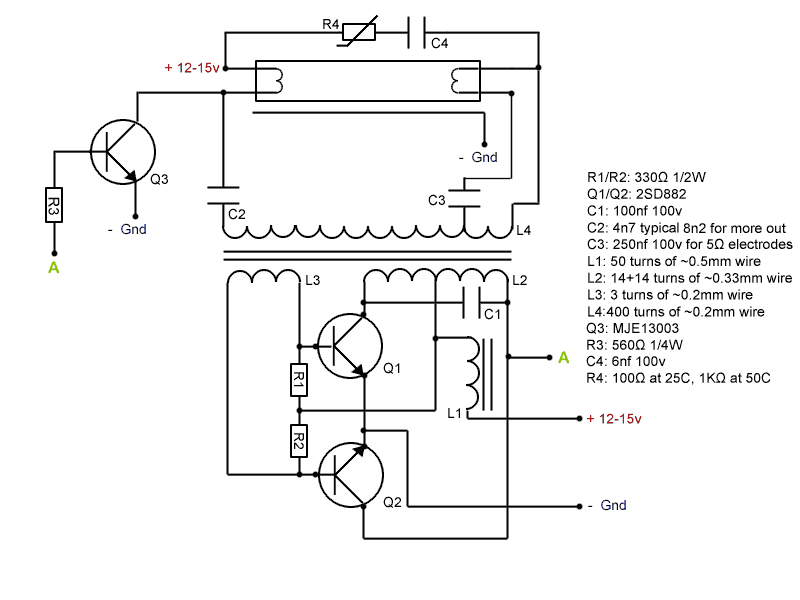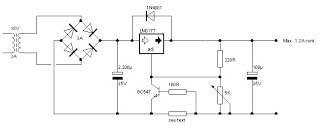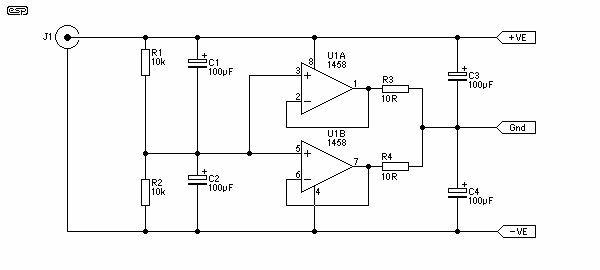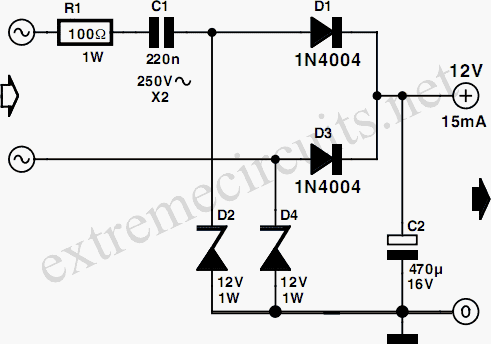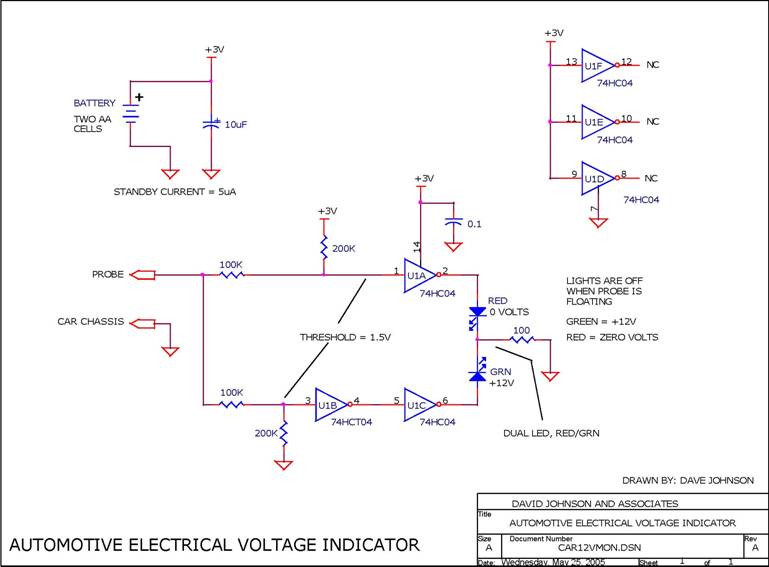
PC 12V ADAPTER
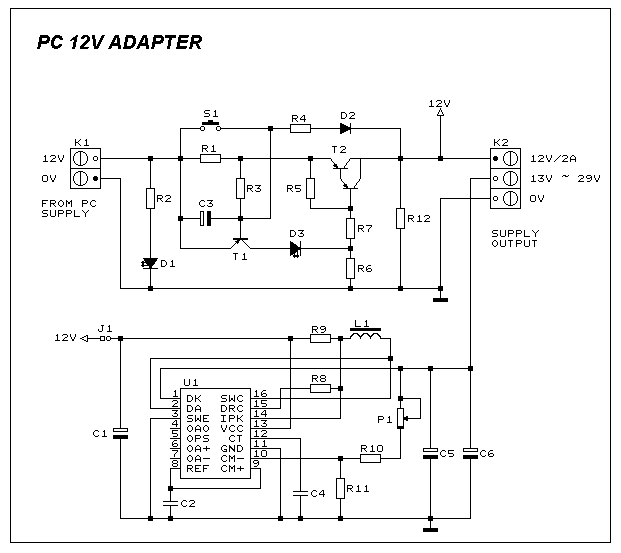
This circuit provides a short circuit protected power supply from PC 12V supply voltage. This is particularly handy when working with PC interfacing projects. More: Fig-1 shows the circuit diagram of the complete power supply. The necessary 12V supply voltage is taken directly from the PC power supply. In order to protect the PC supply against possible short circuits, and especially to prevent the the PC from being c
This circuit is designed to draw a regulated 12V power supply from a standard PC power supply unit (PSU), which typically outputs various voltages including 12V, 5V, and 3.3V. The primary function of this circuit is to safeguard the PC power supply from potential short circuits that can occur during interfacing projects.
The circuit typically includes a fuse or a resettable polyfuse to provide short circuit protection. This component is placed in series with the output of the 12V line from the PSU, ensuring that if a short circuit occurs, the fuse will blow or reset, thus disconnecting the load and protecting the power supply.
In addition to the fuse, a voltage regulator may be incorporated to ensure a stable output voltage. Common voltage regulators for 12V applications include the LM7812, which can provide a regulated output while handling input voltage variations. Capacitors are also used in conjunction with the voltage regulator to filter out noise and stabilize the output voltage.
The circuit may also include indicator LEDs to show the status of the power supply, providing visual feedback that the circuit is operational. Furthermore, appropriate heat sinking may be necessary for the voltage regulator to dissipate heat generated during operation, ensuring reliable performance.
Overall, this circuit is essential for projects that require a stable and protected power source derived from a PC power supply, making it a valuable addition for hobbyists and engineers working on interfacing applications.This circuit provides a short circuit protected power supply from PC 12V supply voltage. This is particularly handy when working with PC interfacing projects. Fig-1 shows the circuit diagram of the complete power supply. The necessary 12V supply voltage is taken directly from the PC power supply. In order to protect the PC supply against possible short circuits, and especially to prevent the the PC from being c 🔗 External reference
This circuit is designed to draw a regulated 12V power supply from a standard PC power supply unit (PSU), which typically outputs various voltages including 12V, 5V, and 3.3V. The primary function of this circuit is to safeguard the PC power supply from potential short circuits that can occur during interfacing projects.
The circuit typically includes a fuse or a resettable polyfuse to provide short circuit protection. This component is placed in series with the output of the 12V line from the PSU, ensuring that if a short circuit occurs, the fuse will blow or reset, thus disconnecting the load and protecting the power supply.
In addition to the fuse, a voltage regulator may be incorporated to ensure a stable output voltage. Common voltage regulators for 12V applications include the LM7812, which can provide a regulated output while handling input voltage variations. Capacitors are also used in conjunction with the voltage regulator to filter out noise and stabilize the output voltage.
The circuit may also include indicator LEDs to show the status of the power supply, providing visual feedback that the circuit is operational. Furthermore, appropriate heat sinking may be necessary for the voltage regulator to dissipate heat generated during operation, ensuring reliable performance.
Overall, this circuit is essential for projects that require a stable and protected power source derived from a PC power supply, making it a valuable addition for hobbyists and engineers working on interfacing applications.This circuit provides a short circuit protected power supply from PC 12V supply voltage. This is particularly handy when working with PC interfacing projects. Fig-1 shows the circuit diagram of the complete power supply. The necessary 12V supply voltage is taken directly from the PC power supply. In order to protect the PC supply against possible short circuits, and especially to prevent the the PC from being c 🔗 External reference

